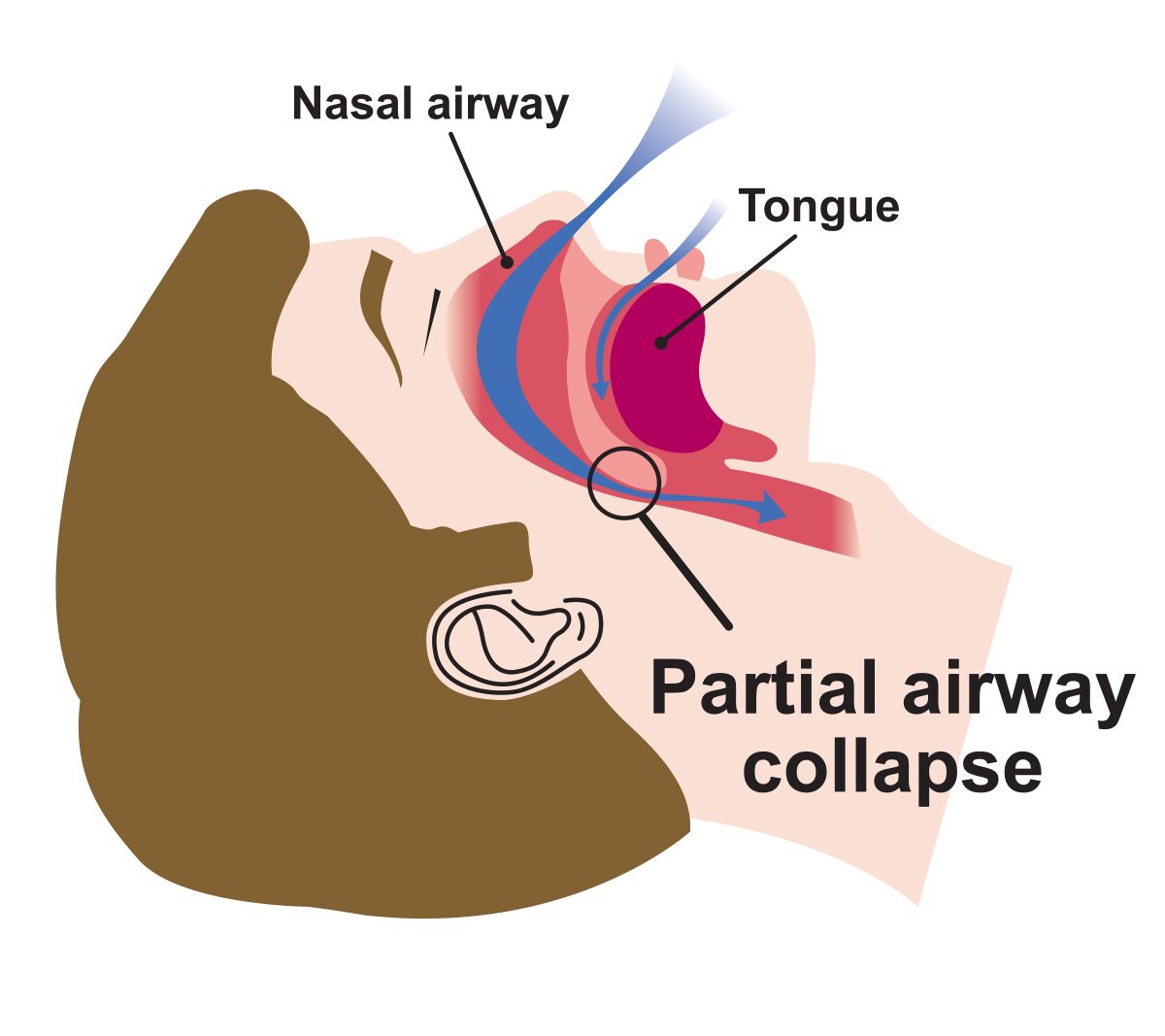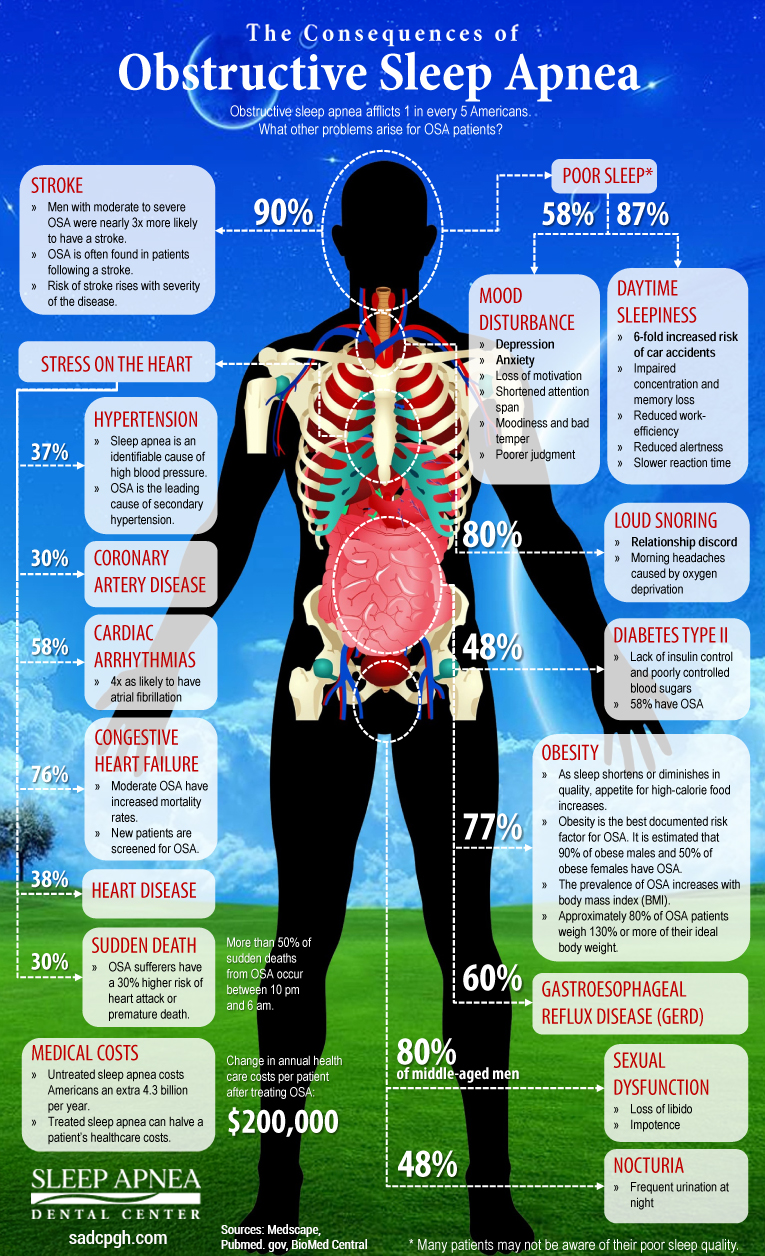Snoring & Sleep Apnea
What is Sleep Apnea ?
Sleep Apnea is when the airway is completely blocked and air is unable to flow through the airway. This is also known as Obstructive Sleep Apnea. The obstruction may occur from the area of the soft palate to below the base of the tongue, causing one to awaken during the night with coughing or a gasping sound, attempting to restore breathing.
Symptoms of Sleep Apnea
- Snoring
- Fatigue or tiredness
- Falling asleep while reading, watching TV or driving
- Freguent overnight urination
- Mood swings
- Poor Sleep
- Morning headaches
- Wake from sleep from coughing, choking or gasping
- Grinding of teeth
- Sexual dysfunction
- Weight gain

What is Sleep Apnea ?
Sleep Apnea is when the airway is completely blocked and air is unable to flow through the airway. This is also known as Obstructive Sleep Apnea. The obstruction may occur from the area of the soft palate to below the base of the tongue, causing one to awaken during the night with coughing or a gasping sound, attempting to restore breathing.

What is Snoring?
Snoring is the sign of a breathing problem. It occurs when the jaw opens and the tongue falls into the back of the throat, causing the airway to narrow and forcing air through the smaller opening. This creates sound vibrations in the throat known as snoring. Snoring can seriously affect your quality of life. It can be embarrassing and inconvenient, and can cause problems in relationships. In some cases, snoring is a red flag for a more serious medical problem called obstructive sleep apnea (OSA).
Disorders Associated with Snoring and Sleep Apnea
- Diabetes
- Heart Attack/Stroke
- High blood pressure
- Cardiovascular disease and arrhythmias
- TMJ pain disorders
- Menopause induced sleep apnea
- Depression/Anxiety
- Obesity
- Acid reflux

Symptoms of Sleep Apnea
- Snoring
- Fatigue or tiredness
- Falling asleep while reading, watching TV or driving
- Freguent overnight urination
- Mood swings
- Poor Sleep
- Morning headaches
- Wake from sleep from coughing, choking or gasping
- Grinding of teeth
- Sexual dysfunction
- Weight gain
What is Snoring?
Snoring is the sign of a breathing problem. It occurs when the jaw opens and the tongue falls into the back of the throat, causing the airway to narrow and forcing air through the smaller opening. This creates sound vibrations in the throat known as snoring. Snoring can seriously affect your quality of life. It can be embarrassing and inconvenient, and can cause problems in relationships. In some cases, snoring is a red flag for a more serious medical problem called obstructive sleep apnea (OSA).

Disorders Associated with
Snoring and Sleep Apnea
- Diabetes
- Heart Attack/Stroke
- High blood pressure
- Cardiovascular disease and arrhythmias
- TMJ pain disorders
- Menopause induced sleep apnea
- Depression/Anxiety
- Obesity
- Acid reflux


